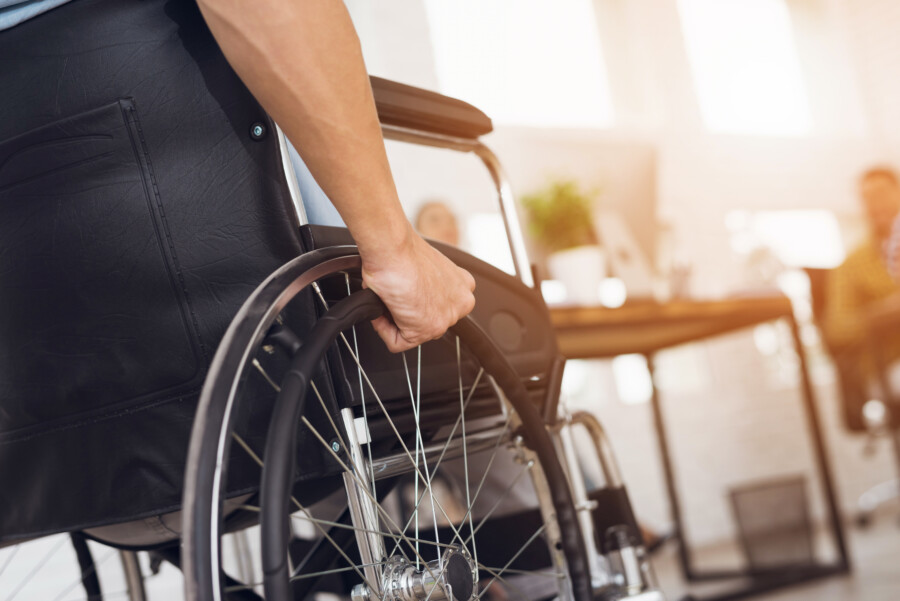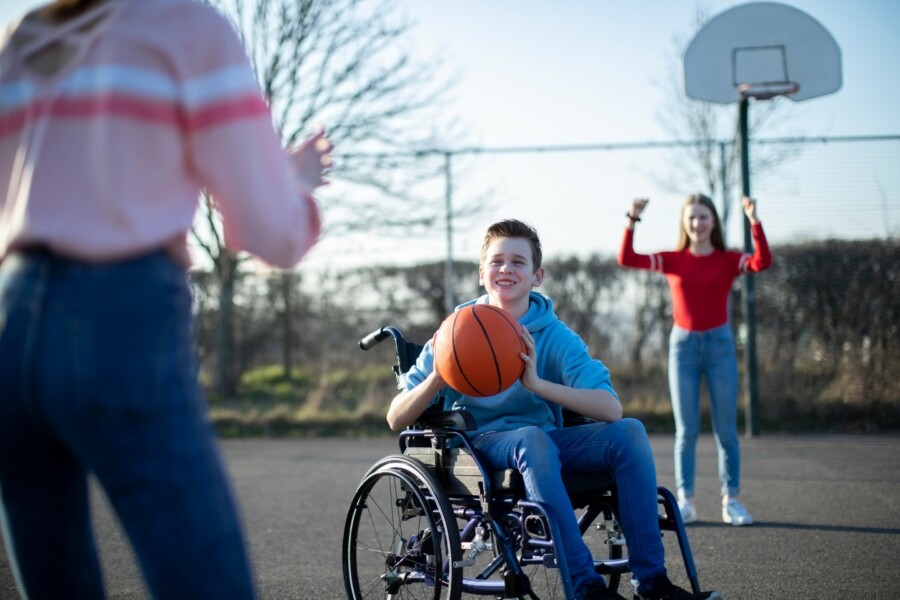At Bolt Burdon Kemp, we are specialists in recovering compensation for people who have suffered spinal cord injury, to get them the money they deserve to:
- Obtain the best spinal cord rehabilitation
- Live as independently as possible
- Get the right support where necessary
What is the spinal cord?
The spinal cord is made up of thousands of nerves.
The nerves carry messages from the brain to the rest of the body. These messages control movement of the body. These messages are also responsible for controlling other functions, such as breathing and the ability to feel touch or pressure.
What happens if the spinal cord becomes damaged?
Damage to the spinal cord can be caused by a trauma, such as an accident or medical mistake, or as a result of infection or disease.
If the spinal cord becomes damaged, the messages between the brain and the rest of the body are interrupted and are not able to pass properly. This can result in a loss of movement and sensation from the point where the spinal cord has been damaged and below. The higher up the spinal cord the injury occurs, the more movement and sensation is lost.
Loss of movement and sensation
Healthcare professionals use letters and numbers to refer to the point of injury along the spinal cord.
A loss of movement and/or sensation often occurs from the point where the spinal cord has been damaged and below.
Paraplegia
Damage to the section of spinal cord in the back will result in paraplegia. Paraplegia affects the movement and sensation in the legs and possibly some stomach muscles. If the spinal cord in your back is injured, damage will have occurred to either thoracic nerves (T1-T12) or lumbar nerves (L1-L5). A back injury would be referred to as T6, L1, etc.
Tetraplegia
Damage to the spinal cord in the neck will result in tetraplegia. This is sometimes referred to as a ‘cervical’ injury, as the nerves in the cervical area (C1-C8) of your spine will be damaged. An injury like this would be referred to as C1, etc.
Tetraplegia affects movement and sensation in all four limbs, as well as the stomach and some chest muscles. Crucially, movement and use of arms, hands and fingers to some degree may be affected.
Bladder and bowel dysfunction
Damage to the spinal cord affects more than just the ability to walk or move limbs. The nerves in the spinal cord are responsible for making sure the bladder and bowel functions. If the spinal cord becomes damaged, this can often cause bladder or bowel dysfunction.
Bladder dysfunction can manifest in two main ways. Sometimes the signals that tell the brain that the bladder needs to be emptied fail to work, so the person with the spinal cord injury does not know when to empty the bladder. This can cause medical problems if the bladder is not emptied regularly.
On other occasions, the bladder is unable to hold urine. This means the bladder of the person with the spinal cord injury empties without warning, even though it is not full.
Bowel dysfunction can present in a similar way. It can either cause an inability to empty the bowels regularly, causing constipation, or a need to empty the bowels without warning.
With good medical advice, the bowels and bladder are capable of being managed to enable individuals to carry out everyday tasks without feeling restricted.
Sexual dysfunction
The nerves in the spinal cord also control sexual function. If these nerves are damaged, sexual dysfunction can occur. The degree of sexual dysfunction and the ways in which it can occur will vary between men and women.
The degree of sexual dysfunction will also be affected by how much of the spinal cord has been damaged.
Pain
Sometimes, damage to the nerves can result in ‘neuropathic pain’. This is nerve pain, which can be very distressing for the person affected. Everybody is different and a loss of sensation does not automatically mean that the person with a spinal cord injury cannot feel some sort of pain.
What is the difference between a complete and incomplete spinal cord injury?
This refers to the type of injury that has been sustained to the spinal cord. If all movement and all sensation have been lost below the level of injury, this will be referred to as a ‘complete’ spinal cord injury.
An ‘incomplete’ injury can be a variety of combinations. It may be that the ability to move has been lost but sensation remains intact. Or, sometimes it is possible for there to be some movement and sensation in the limbs that have been affected.
Individuals who develop cauda equina syndrome, which involves damage to the nerves at the very bottom of the spinal cord, often present as incomplete spinal cord injuries. They may experience bladder, bowel and sexual dysfunction.
Further advances in medicine and rehabilitation have meant that, for some people, early treatment or interventions can minimise the damage to the spinal cord. As a result, incomplete spinal cord injuries are becoming more common.
The different levels of spinal cord injury and how they affect everyday activities
The higher the injury on the spinal cord, the more damage occurs.
(Information source: The Shepherd Center)
High-cervical nerves (C1 – C4)
- This is the most severe of the spinal cord injury levels
- Paralysis occurs in the arms, hands, trunk and legs
- The ability to breathe on the person’s own, cough, or control bowel or bladder movements will be affected
- The ability to speak is sometimes affected or reduced
- When all four limbs are affected, this is called tetraplegia or quadriplegia
- Requires complete assistance with activities of daily living, such as eating, dressing, bathing, and getting in or out of bed
Low-cervical nerves (C5 – C8)
- These nerves control the arms and hands
- A person with this level of injury may be able to breathe on their own and their speech is usually unaffected
C5 injury
- The person can raise their arms and bend their elbows
- There will be some or total paralysis of the wrists, hands, trunk and legs
- They can speak but their breathing will be weakened
- They will usually need assistance with most activities of daily living but once in a power wheelchair, they can move from one place to another independently
C6 injury
- These nerves affect the ability to use and move the wrist
- Paralysis will occur in the hands, trunk and legs
- It may be possible to bend the wrists back
- A person with this level of injury will be able to speak but breathing will be weakened
- They can move in and out of a wheelchair as well as on and off a bed with assistive equipment
- They may also be able to drive an adapted vehicle
- There will be little or no voluntary control of bowel or bladder
C7 injury
- These nerves control the ability to bend the elbow and fingers
- Most people with this level of injury can straighten their arm and have normal movement of the shoulders
- They will be able to do most activities of daily living independently but may need assistance with difficult tasks
- They may also be able to drive an adapted vehicle
- They will have little or no voluntary control of the bowel or bladder
C8 injury
- These nerves control some hand movement
- People with this level of injury should be able to grasp and release objects
- They can do most activities of daily living by themselves but may need assistance with more difficult tasks
- They may also be able to drive an adapted vehicle
- They will have little or no voluntary control of bowel or bladder but may be able to manage on their own with special equipment
Thoracic nerves (T1 – T5)
- These nerves control the muscles in the upper chest, mid-back and abdomen
- Arm and hand function is usually normal
- Injuries usually affect the trunk and legs (also known as paraplegia)
- People with this level of injury most likely use a manual wheelchair
- They can learn to drive a modified car
Thoracic nerves (T6 – T12)
- These nerves control the muscles in the abdomen and back
- This injury usually results in paraplegia
- People with this level of injury will have normal upper-body movement
- They will have a moderate ability to balance while in the seated position
- They should be able to cough productively
- They will have little or no voluntary control of bowel or bladder but can manage on their own with special equipment
- They most likely use a manual wheelchair
- They can learn to drive a modified car
Lumbar nerves (L1 – L5)
- These injuries generally result in some loss of function in the hips and legs
- People with this level of injury may have little or no voluntary control of bowel or bladder
- Depending on the strength in the legs, they may need a wheelchair and/or they may be able to walk with aids
Sacral nerves (S1 – S5)
- These injuries generally result in some loss of function in the hips and legs
- People with this level of injury may have little or no voluntary control of bowel or bladder
- It is likely they will be able to walk
If you or a member of your family has been unfortunate enough to have suffered a spinal injury as a result of an accident or substandard medical treatment, our specialist spinal injury solicitors can assist you in bringing a compensation claim against the people and/or organisations responsible.
Please contact our specialist spinal injury team on 0203 6279 929 or complete our online spinal injury enquiry form.











